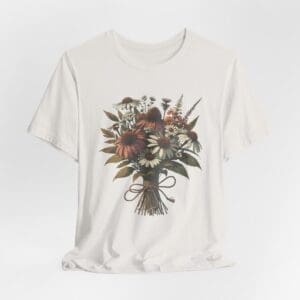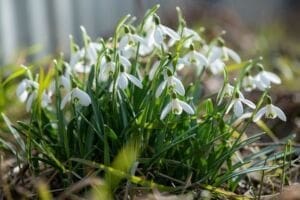Yarrow (Achillea millefolium) is a hardy perennial that has graced herb gardens, meadows, and wild areas for centuries. With its delicate, fern-like foliage and flat-topped clusters of tiny flowers, yarrow is both a functional and ornamental plant. Beyond its visual appeal, yarrow has a long history of medicinal uses and is well-suited to a variety of landscape settings. From providing colour and texture to flower beds to serving as a drought-tolerant groundcover, yarrow is one of the most versatile perennials for gardens. What’s more, yarrow is exceptionally easy to grow, requiring little maintenance or care throughout the seasons.
While yarrow will thrive with minimal care, understanding its unique botanical characteristics and cultivation requirements will ensure success. This comprehensive guide covers everything you need to know about incorporating yarrow into your own landscape, from site selection to maintenance tips. With the right know-how, you’ll be able to cultivate a thriving yarrow patch that enhances your garden’s beauty and utility.
You might also be interested in: Perennial Plants for Wild Gardens
Yarrow: A Botanical Description
To fully appreciate yarrow’s charms and cultivation needs, it helps to understand what makes the plant tick at a botanical level. Here are some key characteristics:
- Physical appearance – Yarrow grows up to 3 feet tall, with one to several straight, woody stems covered in fine hairs. The stems bear deeply divided, fern-like leaves 2-5 inches long, emanating aromatically when crushed. Flat-topped clusters of tiny white or pinkish flowers bloom from early summer to early fall.
- Habitat – Native to Europe and Asia, yarrow thrives in temperate regions worldwide. It prefers full sun and dry, well-drained soil. Yarrow readily colonizes open areas but also adapts well to cultivation in flower beds and borders.
- Flowering – Plants send up multiple branched flower stalks from early summer through fall. The tiny blooms attract pollinators before giving way to seed heads. Flower colour varies between white, pink, and yellow.
- Varieties – Common yarrow (A. millefolium) has ferny, aromatic foliage and white flowers. There are also ornamental varieties with different bloom colors and leaf shapes, like ‘Paprika’ (red flowers) and ‘Moonshine’ (yellow flowers, rounded leaves).
With its delicate foliage and colourful blooms, yarrow adds visual interest and texture. Its rugged adaptability allows it to enhance many garden situations. Now let’s look at how to incorporate yarrow successfully into your own outdoor space.
Cultivating Yarrow in Your Garden: A Comprehensive Guide
While yarrow is unfussy by nature, providing optimal growing conditions encourages vigour and longevity. Follow this guide for all the key steps to raise a thriving yarrow patch.
Site Selection
As a sun-loving plant that thrives on little water, choose an open, sunny area with well-drained soil for planting yarrow.
- Sun exposure – Full sun is ideal, but yarrow will tolerate light shade. Plants growing in too much shade tend to flop over and flower poorly.
- Soil – Yarrow thrives in lean, sandy, well-drained soils. Avoid heavy clay soils and areas that collect standing water. Ideal pH is neutral to slightly alkaline.
Yarrow is perfect for hot, dry slopes, rock gardens, or areas near paths and walkways. Just be sure the site drains well to prevent waterlogging.
Planting Techniques
Yarrow can be established via seeds, transplants, or by dividing mature plants. Follow these tips for success:
- From seed – Sow seeds indoors 8-10 weeks before last frost, or directly outside in spring after the soil warms. Barely cover the seeds and keep moist until germination. Thin seedlings or transplant.
- Transplanting – Plant yarrow transplants or divisions in spring or fall, spacing 1-2 feet apart depending on variety size. Dig holes larger than the root ball, backfill with native soil, and water deeply after planting.
- Division – Every 3-4 years, divide congested yarrow clumps in spring or fall. Use a shovel to slice clumps into pieces, retaining some root mass on each, and replant the divisions.
Starting with transplants or divisions will yield flowers faster than seeds, but sowing seed is the most economical way to propagate.
Watering and Fertilization
One of yarrow’s assets is its thriftiness and drought tolerance once established. Follow these guidelines for the best results:
- Watering – Water new plantings occasionally until roots develop. Then reduce watering except in severe drought. Established plants need almost no supplemental water in most climates.
- Fertilizer – Avoid high-nitrogen fertilizers, which promote flopping foliage. Yarrow thrives on low fertility. Apply a balanced organic fertilizer at planting time and sparingly thereafter.
- Mulching – Mulch around yarrow plants to conserve moisture and regulate soil temperature. Be sure mulch does not pile up on crown and allows air circulation.
Let soil dry between waterings and refrain from amending soil too heavily. This encourages the deep, robust roots that make yarrow tough as nails.
Pruning and Maintenance
Minimal pruning and care keeps yarrow looking its best:
- Deadheading – Clip off spent flower heads to encourage reblooming. Using garden shears, cut back each flower stalk to just above a leaf.
- Fall pruning – Shear plants back to 6 inches after flowering completes in fall. This promotes fresh growth and flowering the following season.
- Spring thinning – If plants become overgrown, thin congested patches in early spring. Dig and replant the divisions for propagation.
- Weeding – Keep weeds away from new plantings so they don’t compete for water and nutrients. Established yarrow helps suppress weeds itself.
With the occasional trim and pruning, yarrow maintains its form and blooms vigorously season after season.
Division and Propagation
Dividing yarrow every few years rejuvenates the plants, prevents overcrowding, and yields new plants:
- Timing – Divide yarrow in spring as new growth emerges, or in early fall after flowering concludes. Avoid mid-summer divisions.
- Process – Use a shovel or garden fork to dig up the plant. Shake off excess soil and separate rooted sections with a knife or by hand.
- Replanting – Plant the smaller divisions into freshly prepared beds. Water well and keep them moist until established.
Dividing overflowing plants helps maintain their vigour and expands your yarrow patch for free.
Pest and Disease Management
Trouble-free yarrow is rarely bothered by pests or disease, especially with proper cultural practices:
- Pest resistance – Yarrow’s strong aroma deters deer, rabbits, and most insect pests. Occasional issues with aphids, mites, or leafhoppers may arise.
- Disease resistance – Excellent air circulation and soil drainage prevent most fungal issues. Powdery mildew is an occasional problem in humid climates.
- Organic treatments – Control minor insect pests with insecticidal soap or neem oil sprays. Remove badly infected leaves.
- Prevention – Avoid overhead watering and promote air flow through proper spacing and pruning.
With preventive care, you can enjoy yarrow’s resilience and keep pests and disease at bay. Simply removing spent blooms and foliage regularly goes a long way.
Harvesting Yarrow Flowers
One of yarrow’s claims to fame is its usefulness for herbal preparations. Follow these tips for collecting flowers at their prime:
- Timing – Harvest yarrow flowers when they are fully open in summer. The essential oil concentration peaks in early to mid-summer.
- Method – Use garden shears to clip flower heads from stems, leaving at least 6 inches of stem to promote reblooming. Gather flowers into baskets or paper bags.
- Drying – Air dry the harvested flowers out of direct sun. Hang bundles or spread flowers on screens in a cool, dry area with good air circulation.
- Storage – Once thoroughly dried, store whole flowers in sealed glass jars or containers. Keep in a cool, dark place to preserve volatile oils.
With proper timing and drying methods, you can stock up on yarrow’s medicinal flowers to use year-round.
Additional Tips for Growing Yarrow (Achillea Millefolium)
Take advantage of yarrow’s versatility and adaptability with these added cultivation tips:
- Companion planting – Interplant yarrow among roses to deter aphids and other pests. Yarrow also complements herbs like thyme and helps repel deer.
- Groundcover use – Plant yarrow as a living mulch on slopes or in traffic areas. Its dense growth chokes out weeds and controls erosion.
- Containers – Dwarf yarrow varieties thrive in containers and window boxes. Select a large enough pot and use a well-drained potting mix.
- Cut flowers – Harvest long-stemmed yarrow flowers for fresh bouquets. The tiny blooms dry well too for everlasting arrangements.
With a bit of creativity, you can find even more ways to include this tough yet delicate-looking plant in your garden.
Final thoughts
With its airy flowers and ferny foliage, yarrow brings beauty and visual interest to gardens. Beyond ornamental appeal, yarrow offers versatility, hardiness, and historical medicinal uses. Cultivating your own yarrow patch is simple, requiring minimal maintenance to thrive. By providing well-drained soil and full sun, yarrow readily flourishes and spreads to create a tranquil flowering groundcover. Use yarrow as a living mulch, companion plant, or foliage accent. Harvesting the blooms expands the benefits of this multifaceted perennial. For an attractive, useful, and carefree addition to your garden, look no further than the humble yet mighty yarrow.







